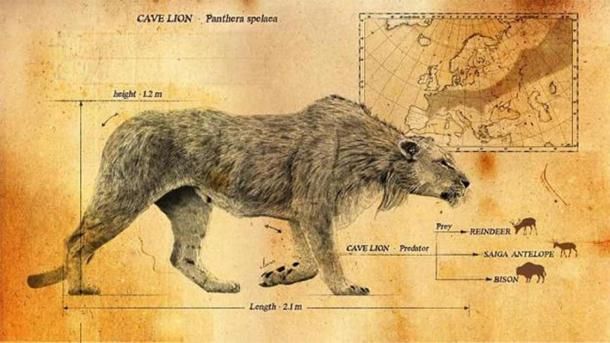Important Facts For Prelims
Cave Lion
- 16 Aug 2021
- 4 min read
Why in News
Recently, scientists have found two nearly perfectly preserved cave lion cubs which lived 28,000 years ago, nicknamed Boris and Sparta.
- They were found in Siberia's permafrost, Russia. The cubs were found 15 metres apart but are not only from different litters but were also born thousands of years apart.
Key Points
- About:
- The Cave Lion (Panthera spelaea), often nicknamed the Mega-Lion, is a
 genus of prehistoric lion that originated during the last Ice Age (2.6 million years ago to 11,700 years ago) in what is now Europe.
genus of prehistoric lion that originated during the last Ice Age (2.6 million years ago to 11,700 years ago) in what is now Europe.
- It is generally placed as a subspecies of the lion.
- It was one of the most common large predators during the last Ice age, with a distribution throughout northern Eurasia and North America. It became extinct about 14,000 years ago.
- The Cave Lion (Panthera spelaea), often nicknamed the Mega-Lion, is a
- Behaviour & Traits:
- The Cave Lions were major predators, hunting ice age deer, bison, and other animals. These lions also were ambush predators, laying in wait and erupting out of the brush to tackle their prey with impressive speed, agility, and strength.
- Measuring 3 meters long and weighing 340 kilos, this was the largest cat species of all time.
- However, like all cats, the Cave Lion could only chase prey over a short distance.
- Despite their size, strength, and relatively long legs, Cave Lions were not designed for long-distance chases.
- The Cave Lions were major predators, hunting ice age deer, bison, and other animals. These lions also were ambush predators, laying in wait and erupting out of the brush to tackle their prey with impressive speed, agility, and strength.
- Significance of Finding:
- Similar finds in Russia’s vast Siberian region have turned up with increasing regularity. Climate change is warming the Arctic at a faster pace than the rest of the world and has thawed the ground in some areas long locked in permafrost.
Permafrost
- About:
- Permafrost is any ground that remains completely frozen—32°F (0°C) or colder—for at least two years straight.
- It is made of a combination of soil, rocks and sand that are held together by ice.
- These permanently frozen grounds are most common in regions with high mountains and in Earth’s higher latitudes—near the North and South Poles.
- Permafrost covers large regions of the Earth. Almost a quarter of the land area in the Northern Hemisphere has permafrost underneath. Although the ground is frozen, permafrost regions are not always covered in snow.
- Permafrost is any ground that remains completely frozen—32°F (0°C) or colder—for at least two years straight.
- Thawing of Permafrost:
- Damage Infrastructure: Many villages are built on permafrost. When permafrost is frozen, it’s harder than concrete. However, thawing permafrost can destroy houses, roads and other infrastructure.
- Release Greenhouse Gas: As permafrost thaws, microbes begin decomposing this material. This process releases greenhouse gases like carbon dioxide and methane to the atmosphere.
- Diseases: When permafrost thaws, so do ancient bacteria and viruses in the ice and soil. These newly-unfrozen microbes could make humans and animals very sick.





-min.jpg)